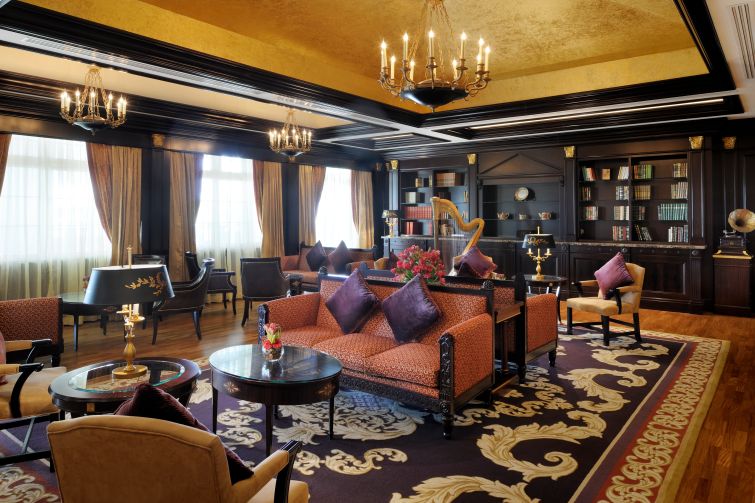Despite the unrest, and the missed connection with Mr. Morsi, the hotel opened days before the June 30 march on Cairo, just 12 weeks after Mr. Ornstein was hired to complete the then 10-years-stagnate project.
He contracted with dozens of countries, spanning China, the U.S., Indonesia and Europe, to arrange for the shipment of 1.2 million objects and more than 400,000 cubic meters in shipping containers, allowing for the completion of the interior design and installation of all furniture, fixtures and décor, and the design of multiple restaurants, suites, a ballroom, conference rooms and media centers.
“Having access to the army’s manpower and resources at our fingertips helped,” he said.
A Westchester native who attended Brandeis University, Mr. Ornstein founded Boston-based J/Brice in 1989. His stateside projects have included the repositioning of the Muse in New York City for Cornerstone Real Estate Advisors and more recently the Helmsley Hotel, which sold for $40 million more than the asking price about a year ago. He redesigned Long Beach, Calif.’s Queen Mary Hotel and a range of projects across the Northeast.
In the 1990s, Mr. Ornstein worked on a few small luxury projects in the Middle East with the Taj Group, which forged relationships that would later mold his enduring presence in the region, leading to contracts for the first Kempinski Hotel in Saudi Arabia, as well as a luxury hotel in Jeddah and restaurants at the $40 million SeaWorld Aquarium.
Today, he deals directly with Arabian royals, Saudi sheiks and Egyptian generals. Indeed, Mr. Ornstein speaks of Qatari Sheik Mohammed Bin A. Rahman Al Thani as if he were an old friend—as does the sheik of Mr. Ornstein.
“He and his designers not only bring to the project a highly unique and distinct passion for design and its finery, but … a remarkable sensitivity and respect for the Arabian culture and marketplace,” the Sheik wrote in a letter regarding Mr. Ornstein and J/Brice’s work at the Grand Heritage Hotel & Spa Qatar, which was redesigned for the Qatari royal family.
Mr. Ornstein transformed the interior design, originally based on an amateur plan that was “wrong on every level,” to include 139 guest rooms instead of the originally planned 60, while retaining the strict exterior style that Shiek Mohammed requested.
“My response was that if you build this you’ll certainly be one-of-a-kind, because it’s a French chateau in the Middle East,” Mr. Ornstein said.
Since its completion in 2009, the hotel has become a preferred gathering place for locals, as the absence of alcohol and a 400-tea lounge featuring live chamber music caters to the locals’ sensibilities, he said.
“It has become a favorite among the Qatari elite,” he said, noting a coastline that is a mish-mash of big-brand hotels largely filled with expats. “You would not go out with your wife to drink at the Ritz-Carlton.”
Mr. Ornstein said that a decade ago nearly every new hotel or office building in the Arab Peninsula was created in a similar international style. With that in mind, he strives to incorporate Arabian design motifs to reinforce the region and culture but also to incorporate modern elements.
“A decade ago, nearly every new hotel in the Arabian Peninsula bore the same style,” he said. “But today the region is transforming the hospitality industry. They want to retain their Arabian heritage while having a place in contemporary society.”



